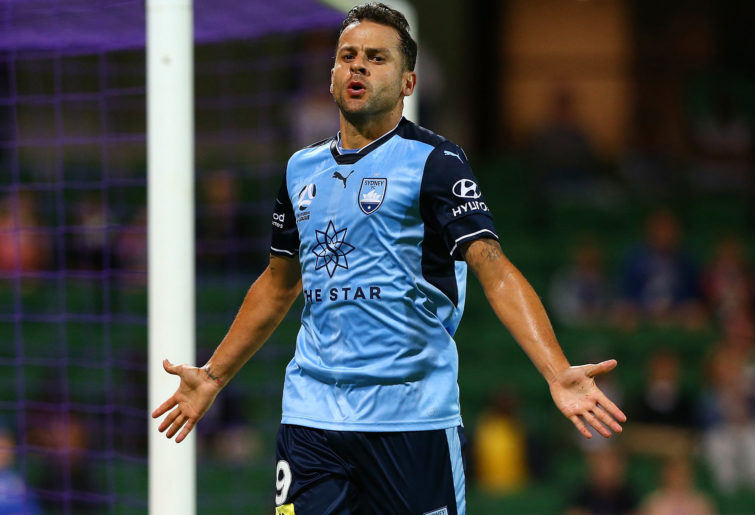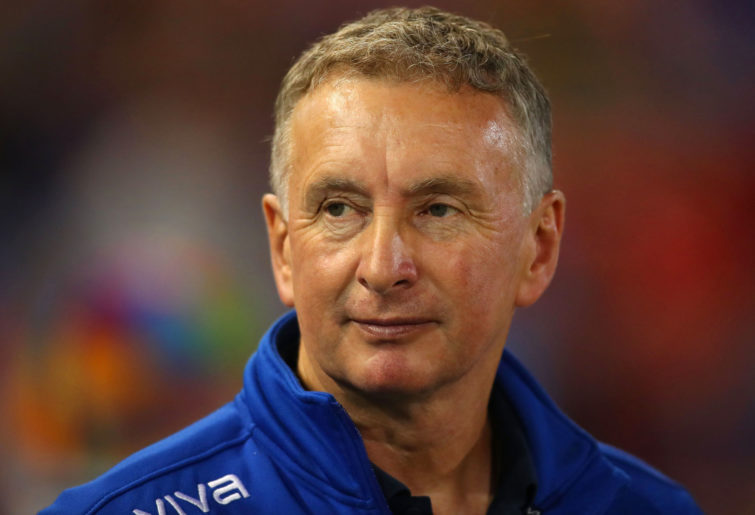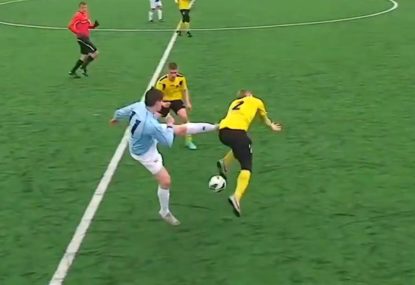Steve Corica follows a long tradition of A-League assistant coaches stepping up to fill the shoes of a highly successful predecessor.
Rado Vidosic followed Ange Postecoglou at Brisbane Roar, Kevin Muscat likewise at Melbourne Victory, while Phill Moss did so after Graham Arnold left the Central Coast Mariners.
Interestingly, the common theme of Postecoglou and Arnold in all four examples cited above suggests there is a pattern to how those two coaches create stable and successful environments at their clubs – which, in turn, is what led to them both becoming Socceroos coaches.
Postecoglou and Arnold develop powerful team cultures and manage key staff productively, which is partly why it is so logical, when they leave, for one of these staff to become the new head coach.
In Corica’s case, his appointment was about continuing the stability Arnold had developed across the football department. Chairman Steve Barlow pointedly commented on this at the time of Corica’s appointment.
“We are proud to be able to promote from within, it is yet another sign of our progress and maturity as a club,” Barlow said.
“His appointment provides us with continuity as we look to build on our many recent successes and deliver more silverware to our Members and fans.”
True to their word, Sydney FC has not dramatically rebooted this season. The majority of the title-winning squad was retained, with the departures of Bobo and Adrian Mierzejewski unexpected (in fact, Bobo even signed a new contract before suddenly leaving), yet they were replaced with similar players in Adam Le Fondre and Siem de Jong.
Stability extends even to Corica’s staff, with former National Youth League coach Robbie Stanton promoted to assist Corica and Chris Pappas, mentioned by Corica as someone who had been around the squad before, replacing Andrew Clark as head of performance.
On the field, too, Sydney are largely the same. Corica has kept with Arnold’s 4-2-3-1 system, including the 4-4-2 shape in defence and the characteristic positional rotations in attack. Last season, this often involved Alex Brosque moving high alongside Bobo, allowing Mierzejewski and Milos Ninkovic to drift inside into narrow playmaking positions, creating space for the full-backs to get high and become wing-backs. This created a 4-2-2-2 formation in attack.

Bobo of Sydney FC celebrates a goal. (Photo by Paul Kane/Getty Images)
This year, the system is similar, with Bobo replacing Le Fondre, and at first, De Jong in Mierzejewski’s right-sided role. The Dutchman’s injury has meant starts for Paolo Retre, who is a different, more direct player but has taken up largely the same positions.
Sydney’s attacking system is effective because it causes numerous problems for the opposition. The use of a high front two and wing-backs means they can pin back a back four because if the opposition full-backs move high to close Sydney’s full-backs, it leaves the defending team two on two at the back. The wide players coming inside, therefore, can play on either side of opposition holding midfielders, creating an overload – one playmaker can get free in space and create goal scoring opportunities.
These rotations were obvious in the first half of Saturday’s match against Newcastle. Ernie Merrick’s team defended in a 4-4-2 shape, so Brandon O’Neill dropped in front of the first line of defence (the front two), creating a three-on-two overload in this zone. This gave Sydney the platform to rotate and overload the Jets in other positions.
The wide players got either side of the two Jets holding midfielders, and the two strikers and wing-backs pinned back the back four and looked to get players running in behind.
In the first half, this was highly effective. The Jets struggled to close space and pressure the ball carrier effectively, meaning Sydney could get free players on the ball in positions between the lines, and find teammates making forward runs in behind the defence.
Merrick recognised as much, describing the need to make a change in this area at half-time (a rare moment where a coach said something of note in this now-traditional interview). The Jets improved in the second half, closing the spaces around the midfield better and adjusting quicker as a unit to prevent players getting free between the lines. They built momentum and eventually grabbed an equaliser through a late set-piece.

Ernie Merrick of the Jets. (Photo by Tony Feder/Getty Images)
The intent here is not to criticise Sydney’s performance, or suggest something needed to change, but to question whether the team needed to evolve in some way to signal a change from Arnold to Corica. There is the risk the latter may become reliant on an existing system, and that he has not yet the side ‘his’.
Muscat, in his first season, was similar, keeping with Postecoglou’s unusual double false nine formation despite the league evolving and finding ways to nullify it. Muscat only eventually changed the system the following year with the signing of Besart Berisha.
To be fair to Corica, injuries to Trent Buhagiar (a replacement for Brosque at No.10) and the absence of De Jong have complicated matters, and ultimately, in terms of results, Sydney have had a strong start to the season.
Whether Sydney’s stability will have long-term positives, though, is worth debating. It may be that opponents, becoming increasingly familiar with the Sydney FC model, may compete more consistently with them – yet, on the other hand, Sydney’s strength in depth and quality starting XI may vindicate Corica’s faith.
This will be worth revisiting as the season progresses.































































































